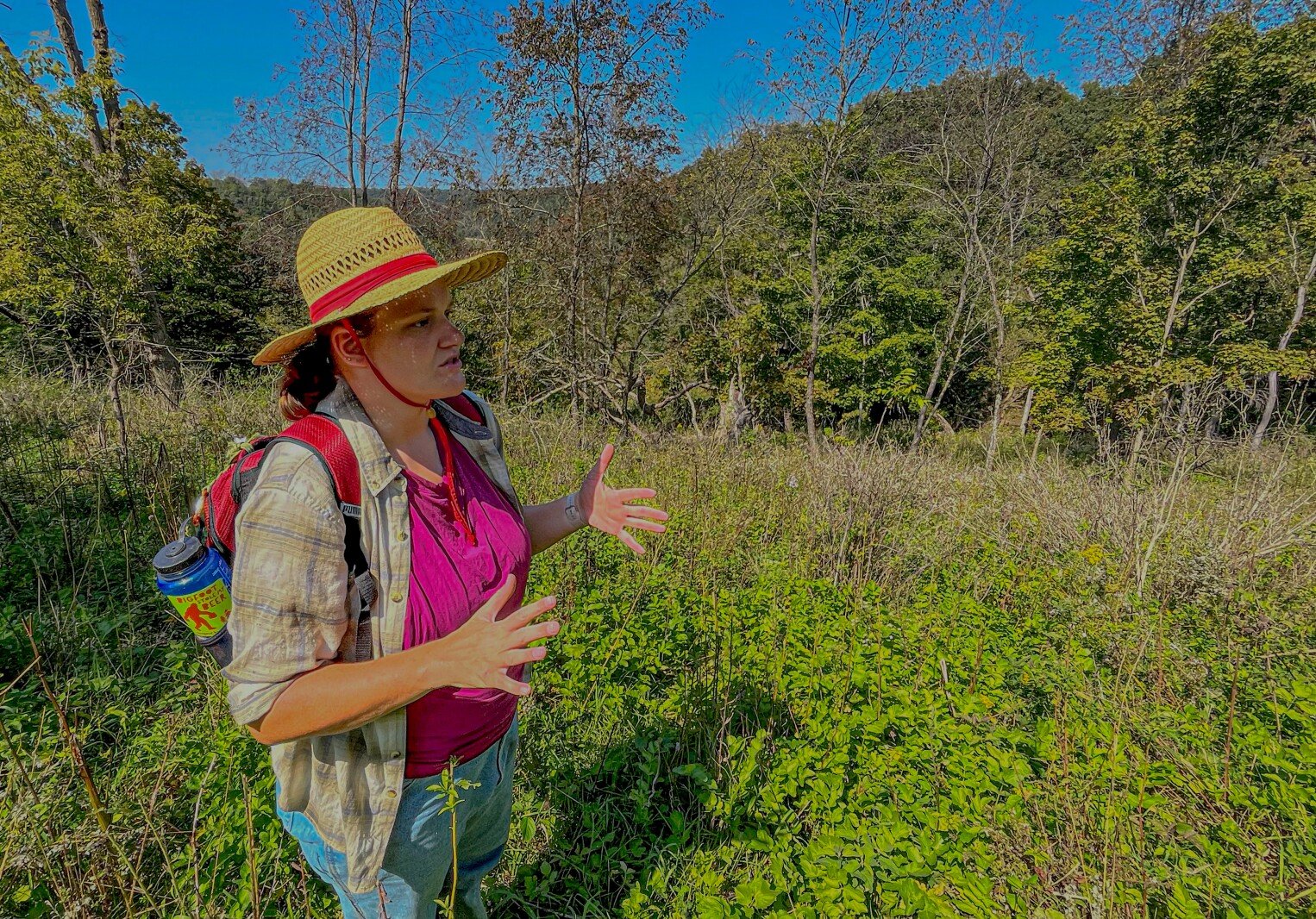CHOICE, Minn. — We the people might feel change is out of our hands, nothing we do in the voting booth will change anything, but now and then, the people step up and get it right.
Results of two huge votes, one from 1988 and the other from 2008, showed up last month in the valley of little Vesta Creek, a small brook trout stream in the Choice Wildlife Management Area between Rushford and Spring Grove. The Environment and Natural Resources Trust Fund, approved in 1988 to use money from the Minnesota Lottery and the Legacy Amendment, voters gave thumbs up to in 2008 for a surcharge on the state sales tax, were in motion there, helping Vesta and prairies along it flourish.
To make sure we have more Vestas well into the future, however, we need your vote this year. The trust fund is up for renewal this fall and please, vote yes. If you ignore it, it will count as a no. All it takes is a split second to fill in the “yes.”
The need for the trust fund renewal convinced about 125 groups to join Minnesotans for Our Great Outdoors to promote a yes vote this fall. Some groups in the coalition are obvious such as TNC and Trout Unlimited. But interestingly, some of the groups aren’t ones you’d normally consider environmental or natural resource backers such as the Coalition of Greater Minnesota Cities and Fairmont Economic Development Authority.
Trust fund and Legacy make a great one-two punch with trust fund paying for more research, outreach and education while Legacy is very much on-the-ground by buying and improving land and water resources.
Since 1991, the trust fund has provided more than $1 billion; since fiscal 2010, Legacy has provided $2 billion, with 40 percent going to natural resources.
Vesta is a good example of that one-two punch.
Using Legacy money, 1,082 acres of beautiful bottomlands along the stream and nearby Root River, forest along and on top and prairies were bought for a state WMA. The stream itself is so pure that it has mostly brook trout. But – and here’s the problem seen across the region – poor land use messed up the streambanks so they are too steep and too high for Vesta to easily get out in floods.
Here’s the deal at Vesta and where Legacy and the trust fund come in: Chris Lenhart, a University of Minnesota research professor in the Department of Bioproducts and Biosystems Engineering, said he used trust fund money to design the project without rock along most of it (some at the very end where it transitions back to the steep banks) so it has more room to meander naturally. Other projects have been confined by lack of land but being on public land, Vesta is different. If it goes well, this could be a model for future projects that should, theoretically, be self-sustaining.
The plan calls for reshaping about 350 feet of the trout stream and stabilizing about 150 feet of a gully leading into it.
It’s a fairly short piece of land for a good test, but it’s a first step and he’s hoping for a larger test. I’ve heard the DNR is looking at such a large-scale test on another WMA. Let’s hope so and I’m guessing some Legacy or trust fund money might help there too.

John Weiss / contributed
Legacy money paid about $150,000 to shape back Vesta’s banks and plant the shrubs. About $243,000 of trust fund dollars paid for the research.
Just above the stream is an old goat prairie that Ellen Titus is using trust fund money to monitor to find ways to restore the old prairie.
Goat prairie is another gem from the natural past of the Southeast that is facing hard times. It was once a dominant land use along south- and west-facing bluffs. Trees were kept at bay by fires set by Native Americans or lightning. When Europeans came in the mid-1850s, they stopped the fires, overgrazed the slopes and then trees later grew back.
Prairies are home to a large variety of plants and animals, some of them in trouble. Using $483,000 of trust fund money, Titus is using real goats to chomp down unwanted plants on Vesta and other methods on several prairies in the region. Again, it’s more of research on land.
“I work as part of the science team to really look at what’s going on with these bluff,” she said. Thus far, the project is at “the awkward teenage phase” so it’s not certain just how well it will work over many years, she said.
“The goal is to get resilient prairies down here,” she said. If it has more diversity of plants, it will also be able to tolerate dry years and wet year,” she said.
Vesta is just a small part of the much larger Southeast Minnesota Protection and Restoration Project that began 11 years ago and gets state money year after year to do more in the region, said Chris Anderson, senior media relations manager, Great Plains Division of The Nature Conservancy that is heavily involved with the work.
“We have this holistic program that are looking at sites that need to be protected,” Anderson said.
John Weiss has written and reported about Outdoors topics for the Post Bulletin for more than 45 years. He is the author of the book “Backroads: The Best of the Best by Post-Bulletin Columnist John Weiss”

John Weiss / contributed

John Weiss / contributed

John Weiss / contributed







